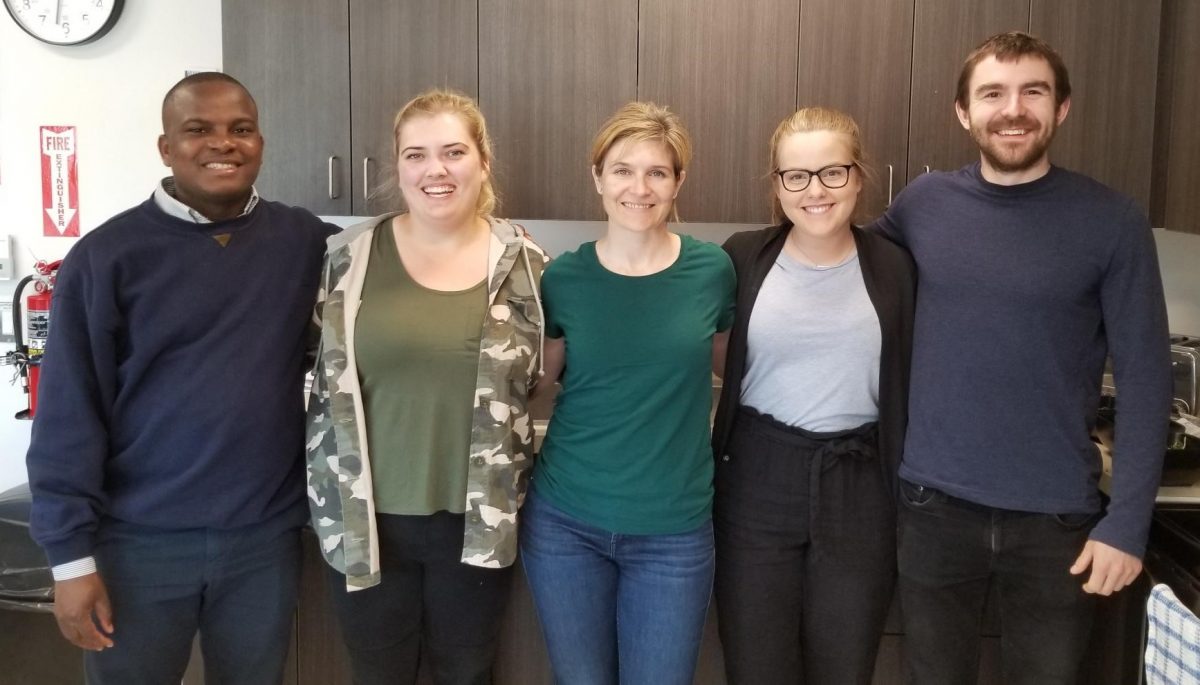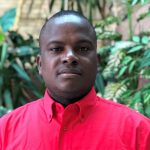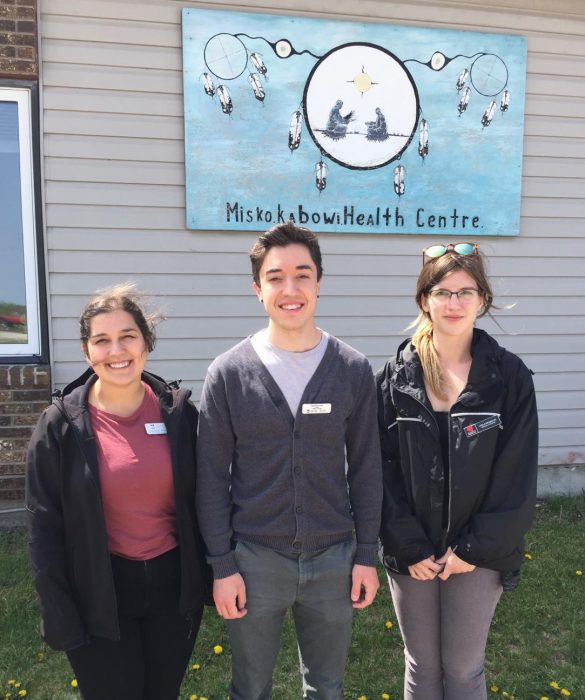
The team that visited Pinaymootang First Nation included Sesan Banjo, dentistry student, Kathleen Deduke, University College of the North nursing student, Susan Wintoniw, interprofessional facilitator from the College of Nursing, Courtney Masson, nursing student, and Nathan Smith, medical student.
Interprofessional Collaboration Experience on First Nations opens Rady students’ eyes, builds collaboration
When Sesan Banjo saw similarities between the First Nations community he visited and his life growing up in Nigeria, the dentistry student felt a strong connection.
Banjo is one of 25 Rady Faculty of Health Sciences students that took part in the Interprofessional Experience in an Indigenous Community this summer. The program is designed to give students the chance to learn about an Indigenous community and its culture while developing collaborative skills with students in different health professional programs.
The students, from the Rady Faculty’s five colleges, were placed in interprofessional teams and spent two weeks living and working on one of six Manitoba First Nations. The program, which is in its third year, is run by the Office of Interprofessional Collaboration (OIPC) and supported by the RBC Experiential Learning Travel Initiative.

Sesan Banjo, student in the International Dentist Degree Program, Dr. Gerald Niznick College of Dentistry.
Banjo, who has lived in Canada for over three years, said his placement on Pinaymootang First Nation was an eye-opening experience.
“I could relate to some of the things that were happening there because I also come from a place where so many amenities are scarce, and there is health inequality,” he said. “The Indigenous people are very proud of their culture and heritage, and Africans are also proud of their culture and their heritage. We got to connect that way.”
On the First Nation, the students shadowed professionals in a range of programs – from health centres to schools to personal care homes. Lisa Mendez, interprofessional practice coordinator, OIPC, said it’s up to the First Nations how the student teams will collaborate with the community.
“I really want the community to showcase what they feel would be important for future health care professionals to know,” Mendez said. “For example, the students participate in cultural experiences like pipe ceremonies and sweat lodges, and take part in outdoor activities like fishing and boating.”
Gwen Traverse, director of health, Pinaymootang First Nation Health Program, said there was a need in her community for someone to conduct dental care presentations. So when Banjo arrived, he was tasked with delivering an oral health campaign in the school.
“Dental presentations are something our current therapist doesn’t have time to do. When we have these extra sets of hands, it enhances our programming,” Traverse said. “I really enjoyed having the students out here, and I’ll continue partnering with the university. I think it’s one of the best things that my community has done, because not only are we creating relationships, but we’re also enhancing programming at the same time.”
At the end of each day, Banjo met up with his team, comprising two nursing students and a medical student. They discussed their day, and they’d learn about each other’s training and future plans.
“We’ve become very good friends,” Banjo said.

Courtney Silvari, student entering her second year of occupational therapy, College of Rehabilitation Sciences.
Courtney Silvari, who is entering her second year of occupational therapy in the College of Rehabilitation Sciences, spent her placement on Lake Manitoba First Nation. Her group, made up of a nursing student and dental hygiene student, split their time between working in the health centre and community involvement. Her group met informally throughout the day to discuss their experiences.
“It’s cool to explore the different learnings and the styles of the different professions,” Silvari said. “It’s interesting to see where there are educational gaps and identify them. It is more clear, for instance, what the nursing students had learned that we hadn’t. I think identifying these gaps helps us build a bridge between the professions and promotes good communication between them as well.”
Before leaving for the First Nation, Mendez partnered with Ongomiizwin – Education to provide orientation sessions and a sharing circle for the students to meet their team members and discuss topics such as racism and its impact on Indigenous health, cultural safety and becoming allies. The team members also met for a post-experience sharing circle.

The team that visited Lake Manitoba First Nation included Courtney Silvari, occupational therapy student, Alex Leclair, nursing student, and Kayla Mcmillan, dental hygiene student.
The communities of Norway House Cree Nation, Misipawistik Cree Nation, Poplar River First Nation and Hollow Water First Nation also took part in the program this summer.
Banjo said one of his goals heading into the placement on Pinaymootang First Nation was to learn how he could partner with Indigenous communities when he finished dental school.
“I saw the way things were run so it gives me a very, very good perspective as to if I’m going back what I can expect, so the two weeks was a very, very good experience for me,” he said.
For Silvari, the experience gave her a new perspective.
“I am now a lot more open to being an occupational therapist in a First Nations community because I’ve gained a little bit of first-hand experience and knowledge,” she said. “I think that the best way to learn about different cultures is to immerse yourself in them, so I think it’s a really great experience and I would definitely suggest others do it.”






